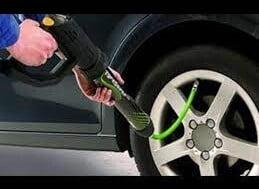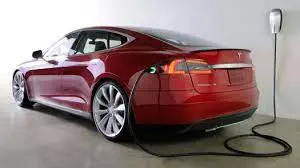all english artical in end
هل عمر البطاريه ينخفض بمرور السنين؟
حتي لو الإستهلاك قليل يعني لو سياره قطعت 30 الف كيلو في 5
سنوات تتساوي مع سياره قطعت 100 الف كيلو في 3 سنوات ؟
للإجابة علي هذا السؤال لابد الأخذ في الإعتبار العديد من العوامل فاذا نظرنا الي الحاله الأولي وهي
السياره التي قطعت 30 الف كيلو في 5 سنوات نجد ان معدل الإستهلاك اليومي للسياره هو 5.16 كيلو متر تقريبا ولكن “كيف تم شحن البطارية” , هل تم شحن البطاريه بنسبه 100 % ثم استخدامها بصوره يوميه حتي
فرغت او تم شحن البطارية يوميا بمعدل 20 % من قيمتها بما يتناسب مع الإستخدام كما اننا لابد ان ناخذ في الإعتبار هل قيادة السيارة كانت لمسافات بعيده علي فترات زمنية بعيده بمعنى ان شحن البطارية بالكامل
علي فترت بعيده !!
يأتي بعد ذلك الحاله الثانية
وهي السياره التي قطعت 100 الف كيلو في 3 سنوات وهذا يعني ان معدل استهالكها اليومي 92 كيلو متر تقريبا ولكن كيف تم شحن البطاريه ؟
لالجابه علي هذا السؤال نجد انه يوجد عوامل عديده تحدد العمر االفتراضي للبطارية :
1 -نسبه شحن البطاريه من قيمه 100 % اي انه كلما قلت النسبه ادي ذلك لزياده عمر البطاريه
2 -عدد مرات الشحن ونوع الشحن “العادي او سريع” كلما زادت مرات الشحن السريع يؤدي ذلك لتقليل كفاءة وعمر البطارية
3 -اسلوب القياده
4 -العوامل الخارجيه البيئية المحيطة بالبطارية مثل درجة الحرارة
5 -مده ترك البطاريه بدون شحن يؤثر سلبيا علي عمرها الإفتراضي
عادة ما تستمر البطاريه من 8 الي 10 سنوات خلال هذه الفتره لن تنهار البطاريه فجأه ولكن قدرتها علي الشحن ستقل بشكل كبير مع زياده سنوات الإستخدام وعادة ما يتم تقليل نطاق السيارة بنسبه 30% مع زياده فتره استخدامها. ومع مرور الوقت تفقد البطارية السعة مما يقلل من النطاق ومع العنايه الصحيحة بالبطارية يؤدي الي تاخر انهيار كفاءتها .. تنخفض سعه البطاريه شيئا فشيئا وبعد عده سنوات تنخفض الي 70 إلى 80%.
Is battery life decreasing over the years?
Even if the consumption is small, that is, if a car cuts 30 thousand kilometers in 5
Years equal to a car that traveled 100,000 km in 3 years?
To answer this question, many factors must be taken into consideration
The car that covered 30,000 km in 5 years, we find that the average daily consumption of the car is approximately 5.16 km, but “how was the battery charged?” Was the battery charged to 100% and then used on a daily basis until
The battery was discharged or charged daily at a rate of 20% of its value in proportion to the use. We also have to take into account whether the car was driven for long distances over long periods of time, meaning that the battery was fully charged
I am far away!!
Then comes the second case
It is the car that covered 100,000 km in 3 years, and this means that its daily consumption rate is approximately 92 km, but how was the battery charged?
To answer this question, we find that there are many factors that determine the life span of the battery:
1 – The percentage of charging the battery is from a value of 100%, meaning that the lower the percentage, this leads to an increase in the life of the battery
2 – The number of charging times and the type of “normal or fast” charging, the more fast charging times this leads to a decrease in the efficiency and life of the battery
3- Driving style
4- Environmental external factors surrounding the battery, such as temperature
5- The period of leaving the battery without charging negatively affects its life span
The battery usually lasts from 8 to 10 years. During this period, the battery will not collapse suddenly, but its ability to charge will decrease significantly with the increase in years of use, and the range of the car is usually reduced by 30% with the increase in the period of use. Over time, the battery loses capacity, which reduces the range. With proper care of the battery, it leads to a delay in the breakdown of its efficiency.. The capacity of the battery decreases little by little, and after several years it drops to 70 to 80%.
Even if the consumption is small, that is, if a car cuts 30 thousand kilometers in 5
Years equal to a car that traveled 100,000 km in 3 years?
To answer this question, many factors must be taken into consideration
The car that covered 30,000 km in 5 years, we find that the average daily consumption of the car is approximately 5.16 km, but “how was the battery charged?” Was the battery charged to 100% and then used on a daily basis until
The battery was discharged or charged daily at a rate of 20% of its value in proportion to the use. We also have to take into account whether the car was driven for long distances over long periods of time, meaning that the battery was fully charged
I am far away!!
Then comes the second case
It is the car that covered 100,000 km in 3 years, and this means that its daily consumption rate is approximately 92 km, but how was the battery charged?
To answer this question, we find that there are many factors that determine the life span of the battery:
1 – The percentage of charging the battery is from a value of 100%, meaning that the lower the percentage, this leads to an increase in the life of the battery
2 – The number of charging times and the type of “normal or fast” charging, the more fast charging times this leads to a decrease in the efficiency and life of the battery
3- Driving style
4- Environmental external factors surrounding the battery, such as temperature
5- The period of leaving the battery without charging negatively affects its life span
The battery usually lasts from 8 to 10 years. During this period, the battery will not collapse suddenly, but its ability to charge will decrease significantly with the increase in years of use, and the range of the car is usually reduced by 30% with the increase in the period of use. Over time, the battery loses capacity, which reduces the range. With proper care of the battery, it leads to a delay in the breakdown of its efficiency.. The capacity of the battery decreases little by little, and after several years it drops to 70 to 80%.






